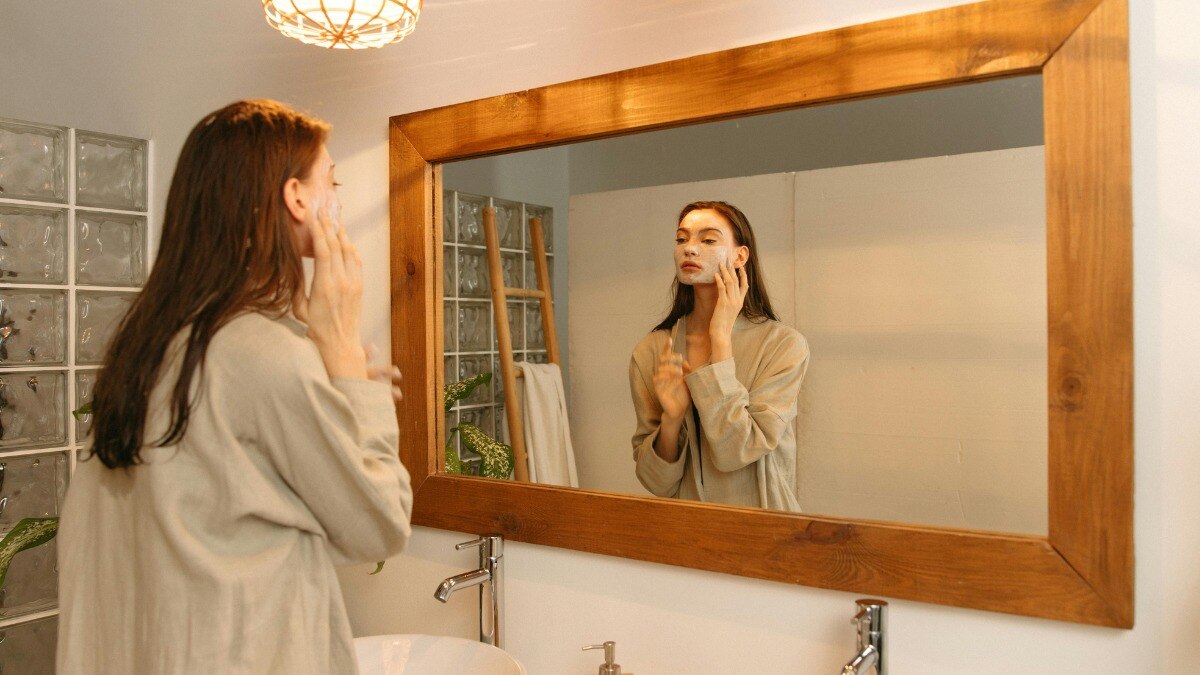
Is lactic acid the answer to all your skin woes?
From mild exfoliation to dark spot reversal, this ingredient could work wonders for your skin.


The glow-granting power of alpha-hydroxyl acids seems to be the talk of the town, and while glycolic acid may be the first one that comes to mind, lactic acid might be what your skin really needs. So let’s break down what all the buzz surrounding this hard-working AHA is. To begin with, lactic acid, a gentler yet effective alternative to glycolic acid, is naturally derived from the fermentation of lactose present in milk and dairy. Don't worry if you’re vegan—it can be synthetically produced for use in skincare!
From fading away pesky blemishes to tackling fine lines, this active ingredient seems to be the gift that just keeps giving. It treats uneven skin texture and pigmentation caused by sun exposure or acne, all while gently hydrating the skin. Unlike other AHAs, lactic acid is a humectant, which means it possesses the ability to bind with the water present in the skin, making it ideal for those who covet a healthy and hydrated complexion. It can also be used as an anti-ageing treatment to diminish the appearance of wrinkles. Often described as an entry-level exfoliator for silky smooth skin, lactic acid helps gently exfoliate the epidermis, leaving your skin smoother, softer, and visibly brighter.
The question that now beckons is: How do I know if lactic acid is for me? “Lactic acid is suitable for all skin types. It is especially ideal for those with dry and sensitive skin,” says Dr Madhuri Agarwal, founder and medical director of Yavana Aesthetics Clinic. For people with dry and sensitive skin, it’s best to steer clear of any AHAs or BHAs until you consult a dermatologist. Lactic acid is a great alternative for those who find glycolic acid too harsh. If you don’t have much experience with AHAs and BHAs, this is just the gateway active your skin needs. “The lactic acid molecule is larger than its AHA counterparts, making it less penetrative”, explains Dr Agarwal. It is more of a surface-level light exfoliation treatment, and that precisely makes it sensitive skin-friendly.
So how does one hop on board the lactose bandwagon? “Initially, start with applying two nights a week; you can increase the frequency once your skin starts adapting well,” says board-certified dermatologist, Dr Jaishree Sharad. Experts recommend using lactic acid-infused products at night to prevent your skin from getting photosensitive or risking sunburns. However, if you do happen to use it during the day, don’t forget to pair it with a healthy dose of sunscreen. “Avoid using retinol, vitamin C or beta hydroxyl acids (BHAs) at the same time as lactic acid to prevent over-exfoliation or rashes,” she recommends. Pairing too many actives together can cause breakouts and even damage the skin barrier. If you’re on the lookout for a more intensive exfoliating treatment, a lactic acid peel done in a professional setting would be the way to go.
Thanks to its exfoliating power, it can also be incorporated into your body care routine. It has been known to battle the dreaded effects of keratosis pilaris aka strawberry skin as it reduces the plugging of hair follicles and smoothens the skin. Slough off any dry and bumpy skin with a lactic acid-infused body wash or body lotion. Who can resist the allure of a multi-use active?
Here’s a list of some of our favourite products featuring lactic acid.
Sunday Riley Good Genes All-In-One AHA Lactic Acid Treatment, ₹8,300

iS Clinical Active Serum, ₹8,200

The Ordinary Lactic Acid 10% + HA, ₹850

Paula's Choice Advanced Smoothing Treatment 10% AHA, ₹3,103

Biossance Squalane + 10% Lactic Acid Resurfacing Night Serum, ₹5,800

Murad Renewing Cleansing Cream, ₹3950











